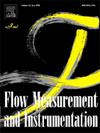Deep learning model for flow regime identification in mixing tanks from pressure signals
IF 2.7
3区 工程技术
Q2 ENGINEERING, MECHANICAL
引用次数: 0
Abstract
Identifying the flow regime (laminar, transition, or turbulent) is crucial in stirred tank mixing processes, affecting mixing efficiency and overall performance. Pressure is often the dominant driving force acting on fluid elements, and its fluctuations provide valuable information for classifying different flow regimes. This paper introduces a data-driven method based on a Convolutional Deep Learning (CDL) neural network to identify flow regimes in a baffled stirred tank. The algorithm was trained on time-pressure signals from force sensors placed in the baffles and flow regime predictions derived from the Newtonian power number, serving as training labels. Once trained, direct measurements of Reynolds number parameters, such as temperature-dependent density and fluid viscosity, which can vary significantly in industrial mixing tanks, are not required to determine the flow regime. The dataset was split into two subsets to implement and validate the CDL model, with 57.14% used for training and validation and 42.86% reserved for testing. The results show that the model successfully classifies pressure signals across all three flow regimes. The proposed non-invasive method provides reliable, fast, and low-cost in-line monitoring of tank mixing, enabling precise flow regime identification without measuring the fluid’s viscosity or density.

基于压力信号的混合罐流型识别的深度学习模型
确定流动型态(层流、过渡或湍流)在搅拌槽混合过程中至关重要,影响混合效率和整体性能。压力通常是作用于流体元件的主要驱动力,其波动为分类不同的流动状态提供了有价值的信息。介绍了一种基于卷积深度学习(CDL)神经网络的数据驱动方法来识别隔板搅拌槽内的流动状态。该算法是根据安装在挡板上的力传感器的时间压力信号和由牛顿幂数得出的流态预测作为训练标签进行训练的。一旦经过训练,就不需要直接测量雷诺数参数,如温度相关的密度和流体粘度,这些参数在工业混合槽中变化很大,以确定流动状态。将数据集分成两个子集来实现和验证CDL模型,其中57.14%用于训练和验证,42.86%用于测试。结果表明,该模型成功地对三种流态的压力信号进行了分类。所提出的非侵入式方法提供了可靠、快速、低成本的罐内混合在线监测,无需测量流体粘度或密度即可精确识别流动状态。
本文章由计算机程序翻译,如有差异,请以英文原文为准。
求助全文
约1分钟内获得全文
求助全文
来源期刊

Flow Measurement and Instrumentation
工程技术-工程:机械
CiteScore
4.30
自引率
13.60%
发文量
123
审稿时长
6 months
期刊介绍:
Flow Measurement and Instrumentation is dedicated to disseminating the latest research results on all aspects of flow measurement, in both closed conduits and open channels. The design of flow measurement systems involves a wide variety of multidisciplinary activities including modelling the flow sensor, the fluid flow and the sensor/fluid interactions through the use of computation techniques; the development of advanced transducer systems and their associated signal processing and the laboratory and field assessment of the overall system under ideal and disturbed conditions.
FMI is the essential forum for critical information exchange, and contributions are particularly encouraged in the following areas of interest:
Modelling: the application of mathematical and computational modelling to the interaction of fluid dynamics with flowmeters, including flowmeter behaviour, improved flowmeter design and installation problems. Application of CAD/CAE techniques to flowmeter modelling are eligible.
Design and development: the detailed design of the flowmeter head and/or signal processing aspects of novel flowmeters. Emphasis is given to papers identifying new sensor configurations, multisensor flow measurement systems, non-intrusive flow metering techniques and the application of microelectronic techniques in smart or intelligent systems.
Calibration techniques: including descriptions of new or existing calibration facilities and techniques, calibration data from different flowmeter types, and calibration intercomparison data from different laboratories.
Installation effect data: dealing with the effects of non-ideal flow conditions on flowmeters. Papers combining a theoretical understanding of flowmeter behaviour with experimental work are particularly welcome.
 求助内容:
求助内容: 应助结果提醒方式:
应助结果提醒方式:


